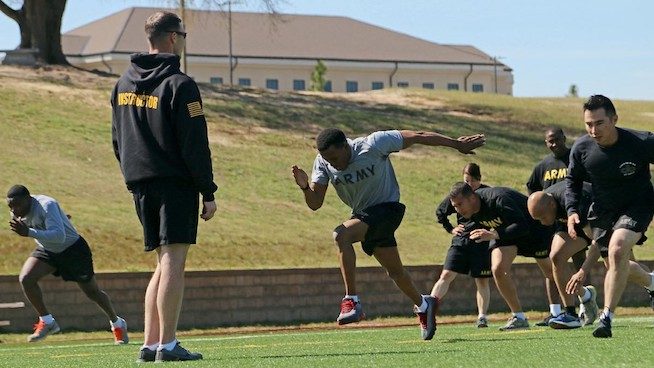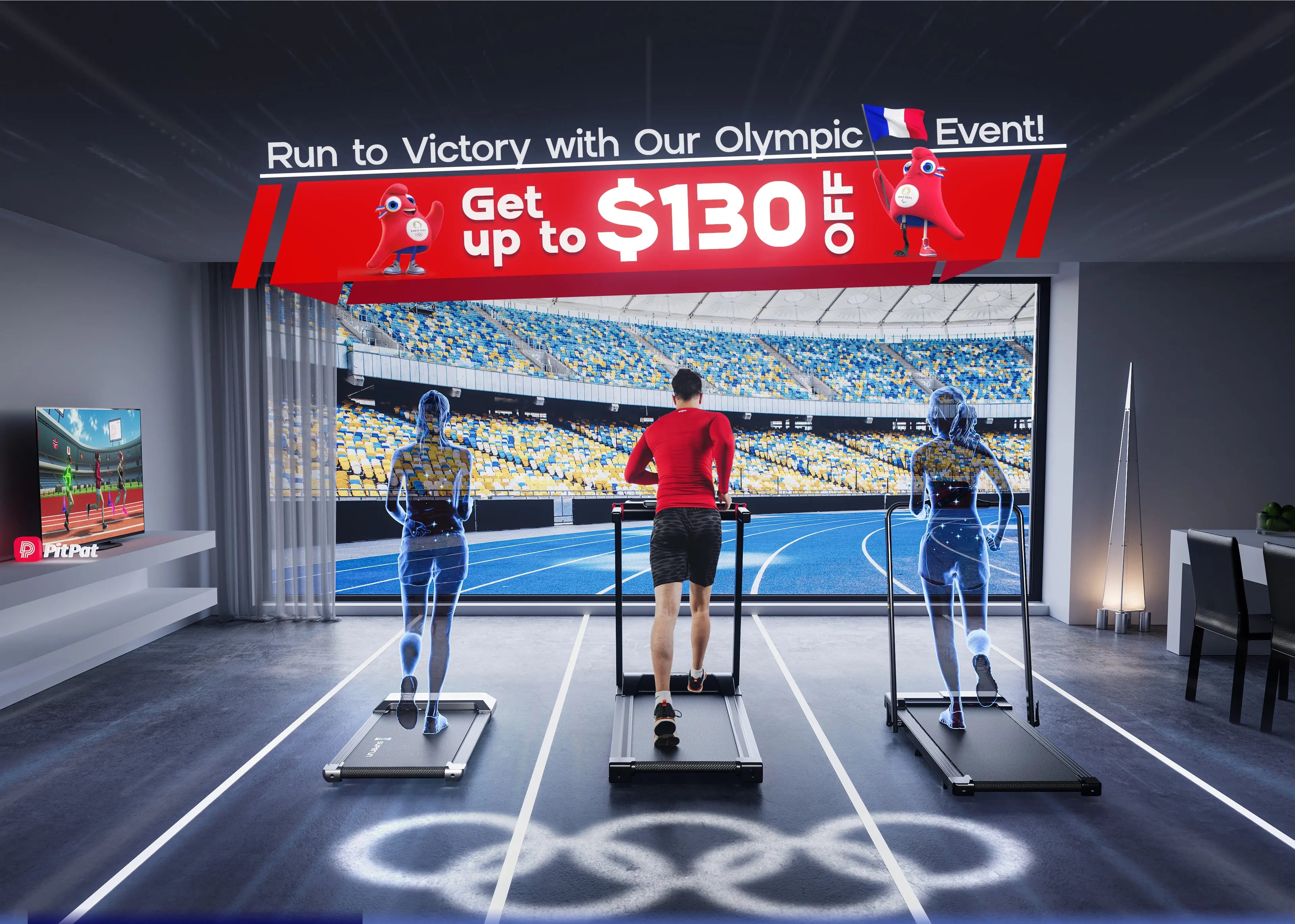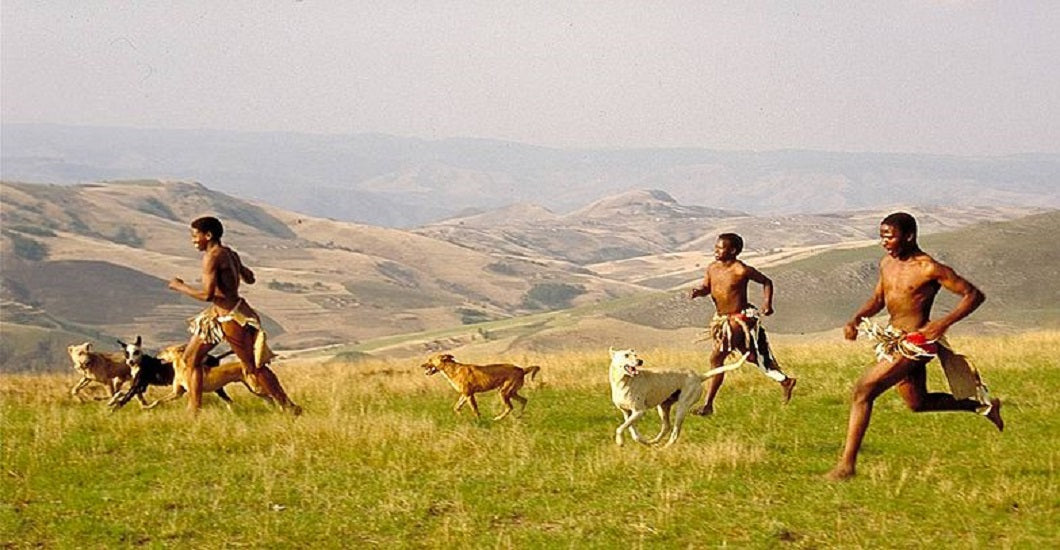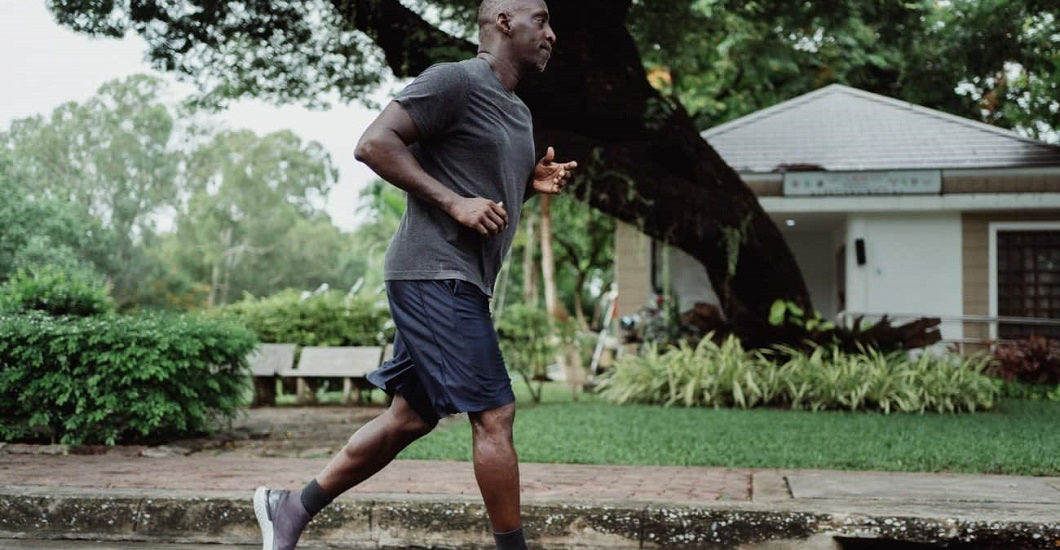As a healthy lifestyle choice, running is gaining popularity among more and more people. So, when was running invented, and when was the treadmill invented?
When Was Running Invented?
There's no specific time when running was invented. Running was never invented.
Scientists studying human bones from about 7 million years ago have shown that the Chadshahs, the oldest known human ancestor, were able to walk upright on two legs.
The history of running is rich and ancient, dating back thousands of years to the earliest civilizations. Running, as a form of human locomotion, has deep evolutionary roots, but its cultural and competitive aspects have evolved.
Running has played a significant role in various cultures, from the early hunting and survival skills of our ancestors to the development of organized competitive racing in ancient Greece. Over centuries, running has transformed from a practical necessity to a popular sport and recreational activity enjoyed worldwide.
Running is indeed important as a fundamental human activity.
The Earliest Running In Human History
The earliest documented instances of running in human history date back to ancient civilizations, particularly in Greece and Egypt. In ancient Greece, running was an integral part of the Olympic Games, which began in 776 BCE and included various foot races. The Greeks also had a messenger system called the "hemerodromoi," which involved running long distances to deliver messages.
In ancient Egypt, running had practical applications in everyday life. There are depictions of people running in ancient Egyptian art, suggesting that running was a common form of transportation and communication.
Running's Role In Early Hunting and Survival
Running played a crucial role in early hunting and survival for our human ancestors. Here are several key aspects of its importance:
- Hunting and Gathering:
Early humans were primarily hunter-gatherers, relying on hunting animals and gathering plants for their sustenance. Running was a vital skill for hunters.

- Tool for Survival:
Running was not only a hunting strategy but also a means of escaping danger. Early humans faced threats from predators, and running was often their primary method of evasion. The ability to sprint or endure long-distance chases was critical for survival.
- Efficient Travel:
Before the domestication of animals and the development of wheeled transportation, running was one of the fastest and most efficient ways for early humans to travel. Running enabled people to cover large distances in search of food, water, and new habitats.
- Communication:
Running also served as a means of communication and messaging in ancient societies. Runners could carry important messages or warnings to distant communities faster than walking, contributing to the sharing of information and coordination in times of need.
- Physical Fitness:
Regular running and walking helped early humans develop the physical endurance and stamina needed for their daily activities, contributing to their overall health and fitness.
Overall, running was a fundamental skill for early humans that helped them secure food, escape threats, explore their environment, and maintain their physical fitness.
The Use Of Running In Military Training and Athletic Competitions
Running serves essential purposes in both military training and athletic competitions:
Military Training:
- Physical Conditioning:
Running is a fundamental component of military physical training. It helps build endurance, cardiovascular fitness, and overall physical stamina, preparing soldiers for the demands of combat and long marches.
- Rucking and Load-Bearing:
Soldiers often need to carry heavy loads over varying terrains. Running helps condition the body for these tasks and improves the ability to move quickly while under load.
- Tactical Movement:
Running is used to teach soldiers how to move quickly and quietly over short distances, which can be critical in combat situations.
- Aerobic Fitness:
Running improves aerobic capacity, which is crucial for maintaining energy levels during prolonged military operations.
- Team Building:
Group running in formations fosters teamwork, discipline, and cohesion among military units.

Athletic Competitions:
- Performance Enhancement:
Running is a core component of many sports, such as track and field, cross country, and triathlons. Athletes use running to improve their speed, agility, and overall cardiovascular fitness, which are critical for success in these competitions.
- Endurance Training:
Long-distance running, like marathon and ultra-marathon training, helps athletes develop exceptional endurance and mental toughness, which are vital in endurance sports.
- Sprint Events:
In sports like sprinting, running is the primary skill. Athletes train to maximize their speed and explosiveness, honing techniques for sprint events like the 100m and 400m dashes.
- Cross-Training:
Running is often incorporated into the cross-training regimens of athletes in various sports. It helps with general conditioning, weight management, and injury prevention.
- Competition:
Running events themselves, such as marathons, half-marathons, and 5K races, are popular athletic competitions that attract participants of all levels, from recreational runners to elite athletes.

In both military training and athletic competitions, running is a versatile and effective means of improving physical fitness, developing specific skills, and achieving performance goals. It contributes to overall health, endurance, and mental resilience, making it an integral part of training and competition programs.
When was the treadmill invented?
What is the treadmill?
Treadmills are exercise machines that simulate walking, running, or climbing in a stationary position. They are widely used for physical fitness, rehabilitation, and scientific research.
When was the treadmill invented?
Treadmills have evolved over centuries, with historical origins dating back to ancient times:
- Ancient Origins:
The earliest treadmills, known as "treadwheels" or "man-powered treadmills," were not exercise machines but rather devices used for various purposes. In ancient Greece, treadmills were used as a form of punishment. Prisoners or slaves need to push or walk on a horizontal wheel. Early treadmills were also used in mining and agriculture to power machinery or lift heavy objects.
- 19th Century Innovations:
Treadmills emerged in the 19th century as exercise devices. The "treadmill mill" was developed in England in the early 19th century and was used as a means of labor for prisoners. It involved prisoners walking on a continuously turning wheel, which also had a grain-grinding function.

- Medical and Rehabilitation Use:
Treadmills began to find applications in the medical field in the early 20th century. Treadmills were used to assess cardiovascular function. Later, treadmills also were used for rehabilitation, especially for patients recovering from leg injuries or surgeries.
- Fitness and Commercial Treadmills:
In the late 20th century, treadmills became popular exercise machines in fitness centers and homes. Treadmills offer users a controlled environment for walking or running, making it convenient for cardiovascular workouts. Advances in technology introduced features like adjustable speed and incline settings, heart rate monitoring, and pre-programmed workouts.
- Modern Treadmills:
Today's treadmills are sophisticated machines with various features, including interactive screens, virtual training programs, and the ability to sync with fitness apps and wearable devices. They cater to a wide range of fitness goals and preferences.
Just like SupeRun Treadmills, which are foldable, smart, and mobile. SupeRun Smart Folding Treadmills are compact and easy to store, which helps people save space. On the other hand, smart treadmills can link to a fitness app - PitPat, which can help people run better and keep healthier. There are many training courses and running competitions online. Runners can have so much fun running at home.

The Advantages Of Using Modern Treadmills For Running
Modern treadmills offer numerous advantages for running, making them a popular choice for individuals seeking efficient and effective ways to improve their fitness. Here are some of the key advantages of using modern treadmills for running:
- Convenience:
Treadmills provide a controlled and easily accessible environment for running. You can run regardless of the weather or time of day.
- Safety:
Treadmills offer a flat, cushioned surface that reduces the impact on joints compared to running on hard pavement or uneven terrain. This can help prevent injuries and reduce the risk of joint pain.
- Customization:
Modern treadmills often come with adjustable speed and incline settings. Treadmills allow runners to tailor their workouts to their specific fitness levels and goals, whether it's a light jog, a high-intensity interval workout, or hill training.
- Monitoring and Feedback:
Many treadmills are equipped with built-in heart rate monitors, distance tracking, calorie counters, and other performance metrics. Runners can track their progress and data at any time, and adjust the training as needed.
- Entertainment:
SupeRun treadmills can link to a fitness app - PitPat. Runners can have running competitions with other people online to have fun.
- Safety Features:
Modern treadmills often come with safety features such as emergency stop buttons and safety clips that can be attached to your clothing. These features help ensure your safety while using the machine.
Conclusion:
In conclusion, the origins of running are deeply rooted in our evolutionary history, dating back to the early days of humanity when it was an essential skill for survival, from hunting to evading threats and covering vast distances. Over time, running evolved from a necessity into a recreational and competitive activity, with documented instances of its practice in ancient Greece and Egypt. While we may not pinpoint an exact moment when running was "invented," its historical significance as a fundamental human activity and its enduring popularity as a sport and fitness pursuit makes it a testament to the enduring and universal nature of this simple yet profound form of physical movement.






Leave a comment
All comments are moderated before being published.
This site is protected by hCaptcha and the hCaptcha Privacy Policy and Terms of Service apply.